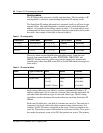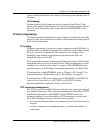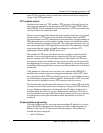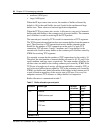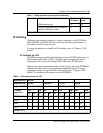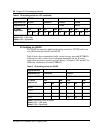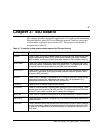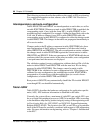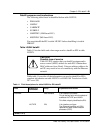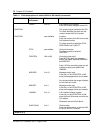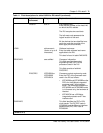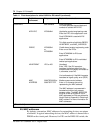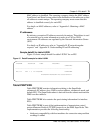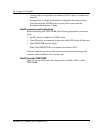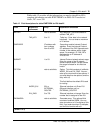
68 Chapter 3: EIU datafill
297-8991-910 Standard 03.01 August 1999
The following sections describe these tables as they apply to EIU provisioning.
For complete information on data schema, refer to DMS-100 Translations
Guide, 297-8xxx-350.
Interdependency and auto-configuration
Tables IPROUTER and IPHOST are interdependent on each other, as well as
on table IPNETWRK. Whenever a tuple in table IPROUTER is modified, the
corresponding tuple, if any (with the same EIU), in table IPHOST is also
modified and auto-configured. For example, if either the SuperNode side or the
LAN-side IP address changes for an EIU in table IPROUTER table, the
corresponding entry in table IPHOST is configured to reflect the changes made
in table IPROUTER. The changes in the tables are propagated immediately to
all in-service nodes.
Changes made to the IP address component in table IPNETWRK also force
auto-configuration of the IP address components of all the nodes listed in
tables IPROUTER and IPHPOST. The auto-reconfiguration routine validates
the changes made in table IPNETWRK against the current entries in tables
IPROUTER and IPHOST. If the new parameters of IPNETWRK table do not
conform with all the current entries in the other two tables, auto-configuration
is not performed and the reasons are displayed.
The validation routine for auto-configuration validates the host IDs of all the
nodes in tables IPHOST and IPROUTER with the new host ID size being
proposed in table IPNETWRK. The changes cannot be made to table
IPNETWRK if the validation for auto-configuration fails. If the changes are
validated for auto-configuration, the modified data in table IPNETWRK is
propagated to all nodes along with the modified data (as a result of auto-
configuration) of tables IPROUTER and IPHOST.
Boot protocol (BOOTP) may automatically datafill the FPs in table IPHOST
even though EIUs are datafilled automatically.
Table LIUINV
Table LIUINV describes the hardware configuration for application-specific
units (ASU). EIU hardware information is datafilled in this table.
Currently, the system allows a maximum of eight EIUs per switch. EIUs can
be on a single link peripheral processor (LPP) or in multiple LPPs (according
to the limitations imposed by product integrity testing of the engineering rules
in Provisioning Rules for LPP, SSLPP, and SNSE LIS, System Engineering
Bulletin SEB 92-02-001. The location of an EIU on an LPP or on a particular
shelf of the LPP must be carefully considered with respect to LPP engineering
rules. For more information on engineering, refer to “Chapter 1: Introduction
to the EIU”.



